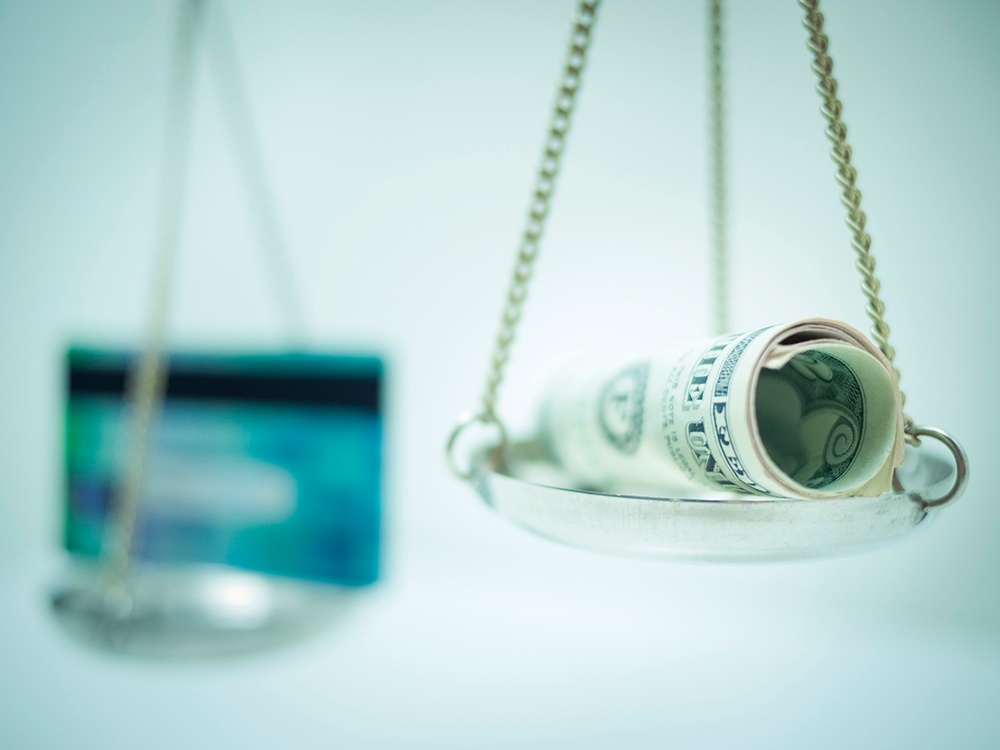
How to Use a Credit Card to Improve your Credit Score
Using credit cards wisely is one of the best ways to gradually improve your credit and increase your credit score. However, using credit cards to build credit is only recommended if you are able to manage your payments responsibly. While credit cards can slowly build your credit through proper use, they can also cause your credit score to quickly plummet if used unwisely. The Federal Reserve’s most recent release of consumer credit information shows that American credit card debt currently sits at $978.8 billion. This debt is no doubt aversely affecting millions of credit scores across the country – but this doesn’t mean credit cards are inherently bad or risky, and they can help many reach their financial goals if utilized correctly.
Here are 3 proven ways you can use credit cards to your advantage, instead of letting them negatively impact your credit score.
Show a record of on-time payments.
 Payment history makes up 35% of your FICO credit score. Always pay your bill on time, and after you build up a record of on-time payments, your payment history will reflect favorably on your entire score.
Payment history makes up 35% of your FICO credit score. Always pay your bill on time, and after you build up a record of on-time payments, your payment history will reflect favorably on your entire score.
One trick to making sure you have the funds to pay on time and in full each month is to treat your credit card like the funds will be drawing directly out of your bank account. If you’re specifically using a credit card for the purpose of building credit, only buy necessary items that you know you would have to purchase with cash or a debit card anyway, like gas or groceries.
Treating your credit card like a debit card will ensure you’re only spending money you know you have, rather than being surprised by the bill amount each month.
Perfect your credit balance to credit limit ratio.
 Credit utilization makes up 30% of your FICO credit score and measures how much available credit you carry. If your balances are kept low in comparison to the amount of credit you have access to, your score will improve.
Credit utilization makes up 30% of your FICO credit score and measures how much available credit you carry. If your balances are kept low in comparison to the amount of credit you have access to, your score will improve.
Take advantage of this scoring component by keeping your balances under 30% of your total credit card’s limit. If you pay on time and in full each month, but are still maxing out your balance every time – you lose the benefits of this scoring component.
If you want to increase the total amount of credit you have access to, one simple way is to open a new credit card or ask for a balance increase on the credit cards you already use regularly. Then if you can keep your spending levels the same, your credit balance to limit ratio will drastically improve.
Keep old credit card accounts open, even if not in use.
 Credit history accounts for 15% of your FICO credit score. This history includes all credit cards you’ve ever used. The longer you’ve been using credit, the higher your score becomes. Keeping old credit card accounts open, even if you’re not actively using the card anymore, will still be reported as beneficial credit history. If you close the account, you lose the benefits of that history as well as the higher credit utilization ratios.
Credit history accounts for 15% of your FICO credit score. This history includes all credit cards you’ve ever used. The longer you’ve been using credit, the higher your score becomes. Keeping old credit card accounts open, even if you’re not actively using the card anymore, will still be reported as beneficial credit history. If you close the account, you lose the benefits of that history as well as the higher credit utilization ratios.
Don’t expect immediate changes to your credit score.
 If you follow these tips, using a credit card has the ability to build or rebuild your credit and increase your credit score. Don’t expect immediate results reflected in your score, but if you’re patient, proving you can manage credit cards responsibly will benefit your credit long-term.
If you follow these tips, using a credit card has the ability to build or rebuild your credit and increase your credit score. Don’t expect immediate results reflected in your score, but if you’re patient, proving you can manage credit cards responsibly will benefit your credit long-term.
For more financial advice and helpful tips, subscribe to our blog! Get the latest posts from our experts delivered directly to your inbox, and start working towards your financial goals. Sign up now!
-2.png?width=300&height=65&name=AFCU-logo-2019-white-sm%20(1)-2.png)